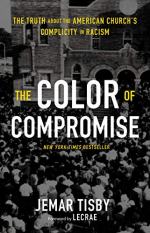
|
| Name: _________________________ | Period: ___________________ |
This test consists of 5 multiple choice questions, 5 short answer questions, and 10 short essay questions.
Multiple Choice Questions
1. What did Martin Luther King, Jr. see as the best prevention for riots?
(a) Creative works.
(b) Social justice.
(c) Strict laws.
(d) Higher education.
2. How did church leaders in 1950s Georgia propose to "Keep Kirkwood White" (145)?
(a) By voting for politicians who supported segregation.
(b) By refusing to allow Black children to attend local schools.
(c) By urging parishioners not to sell homes to black people.
(d) By staging a letter-writing campaign to a local newspaper.
3. Following the Civil War, what part of the U.S. had the largest number of Catholics?
(a) The East Coast.
(b) The South.
(c) The West Coast.
(d) The Midwest.
4. What was a primary goal of "Redeemers" (97)?
(a) To stop Black people from voting.
(b) To provide Black citizens with land.
(c) To promote racial equality.
(d) To enforce segregation laws.
5. Who was the first Grand Wizard of the KKK?
(a) Nathan Bedford Forest.
(b) James A. Colescott.
(c) William Joseph Simmons.
(d) Samuel Green.
Short Answer Questions
1. In Chapter 7, Tisby speaks about that the "conspicuousness of white supremacy in the south" (129). According to him, what is one side-effect of this phenomenon?
2. Which professions were excluded from receiving Social Security?
3. During Billy Graham's 1953 crusade, he encountered segregated seating at a location where he was scheduled to speak. How did he respond?
4. What was the term for the bloody racial conflict that gripped the South during 1919?
5. Who was the first black U.S. senator?
Short Essay Questions
1. In Chapter 8, Tisby discusses several parts of Martin Luther King Jr.'s platform that were considered controversial among white moderate Christians. Which of his beliefs did white moderates often find objectionable?
2. What prompted William J. Seymour's religious activities?
3. According to Tisby, why did many white Christian moderates support a "law and order" (142) approach over the civil rights movement?
4. In Chapter 6, Tisby discusses the "Lost Cause" narrative. How did this narrative view white Southerners living in pre-Civil War communities?
5. What was one domestic outcome of Black involvement in the armed forces during World War I?
6. How did white Christians use the "curse of Ham" (82) passage to justify slavery?
7. In Chapter 8, Tisby argues that white moderates during the civil rights movement failed to understand something about racism. What does he believe they missed?
8. What was Theodore Bilbo's opinion on racial intermixing?
9. What happened in the Watts neighborhood of LA in 1965?
10. Following the Scopes Trial of 1925, what did many white Christians fear?
|
This section contains 714 words (approx. 3 pages at 300 words per page) |

|




